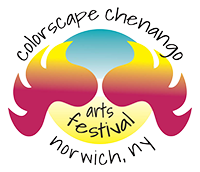ZAPP Image Standards
Formatting
All images must be formatted to the following specifications.
- Recommended Dimensions: 1920 pixels on the longest side.
- File Format: Save all images as Baseline Standard JPEG.
- Do not save as a Progressive JPEG. • File Size: JPEGs must be under 2.0 MB.
- Color space: Save images in RGB color space, preferably RGB.
Since the images will be reviewed via projection, Colorscape will add black bars (also known as masks), as needed, to “square” the image. Because the default in all projected images is horizontally oriented, squaring an image allows for all images to be displayed equitably.
Because some artists do not have the ability to upload images that are 1920 pixels on the longest side, we allow for a smaller image to be uploaded into the system. While we strongly recommend that all artists continue to utilize the 1920 pixel standard, if this is not possible, artists can now upload images that are a minimum of 1400 pixels on the longest side.
If you have existing 1920×1920 images in your image bank, there is no need to remove and re-upload them to these new specifications. If some of your images are not exactly 1920×1920 pixels in size, you are no longer required to add black bars to square your images in order to upload successfully. For example, if you have an image that is 1920×1800 pixels, we will now accept the image size
for upload and add black bars prior to jury review, as needed, to “square” the image to maintain equitable image presentation. Thus, a 1920×1800 pixel image will be brought to 1920×1920 pixels for projection jury display by applying black bars.
Formatting your images according to these guidelines will give you more control over how images will look and how jurors will view them.
How do I format my images?
Like slides, formatting your digital images can be done on your own. You will need photo-editing software that can resize images, change image resolution, create new images, and save images as JPEGs. There are a variety of products that can help you format your images successfully. Packaged software is available to purchase as well as free downloadable software. Recently various websites are offering online image editing tools as well.
- Adobe (http://www.adobe.com) currently provides two photo editing products–Adobe Photoshop and Adobe Elements–that are very popular among today’s designers and artists. Adobe Elements, the less-expensive option, provides a free 30-day trial if you would like to try the program before purchasing.
- Get Paint (http://www.getpaint.net), a free open-source program for Windows-based computers, can also help to format images successfully. If you are a Mac user, download Gimp (http://www. gimp.org), a userful image editing program.
- Sumo, Aviary, and Pixlr are some of the few websites out there that offer image editing right in the browser.
If purchasing a photo editing program is out of your budget or you are short on time, having a digital professional prepare your images may be your best option.
Do you have any tips or tutorials about how to format my images?
Yes. Please let me know what software you are using and I will send you a pdf.
What is resolution versus image size?
Image resolution, otherwise known as dpi, is the number of dots per square inch of an image when it is printed. Image size is the dimensions (length and width) of an image in a digital format. Resolution reflects printer quality and image size designates how large your image will be viewed on monitors.
Do I have to use the black masks on my images?
Black masks are not required but will be added by Colorscape allow projected images to be displayed equitably.
